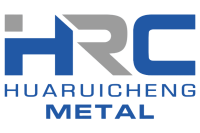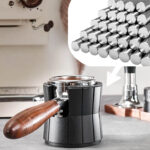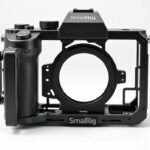welding
welding service
We provide expert welding services specializing in MIG (Metal Inert Gas) and TIG (Tungsten Inert Gas) welding, ideal for high-strength, precision metalwork. Our team is equipped to handle a wide range of materials including aluminum, steel, and stainless steel, delivering clean, durable welds for industrial, commercial, and custom applications.
Welding is a process that uses heat or pressure, or both, to achieve atomic bonding between two separated metal surfaces to form a permanent connection. The essence of welding is to establish an atomic bonding force between the two welded workpieces to connect the separated materials into a whole.
The welding process usually involves three basic elements: heat source, protection method and filler material. The heat source provides the necessary energy to melt the metal or reach a plastic state; the protection method prevents the molten metal from contacting harmful gases in the air; and the filler material is used to supplement the weld metal or improve the weld performance.
Welding Principles
At its core, welding relies on the principles of heat and metallurgy. By applying sufficient heat to the base materials, they are brought to their melting point or near-melting condition. A filler material may be used to enhance the weld joint. Upon cooling, a strong metallurgical bond is formed. The effectiveness of a weld depends on:
Proper temperature control
Appropriate filler material
Clean joint surfaces
Correct welding speed and technique
Adequate shielding from contaminants (air, moisture)
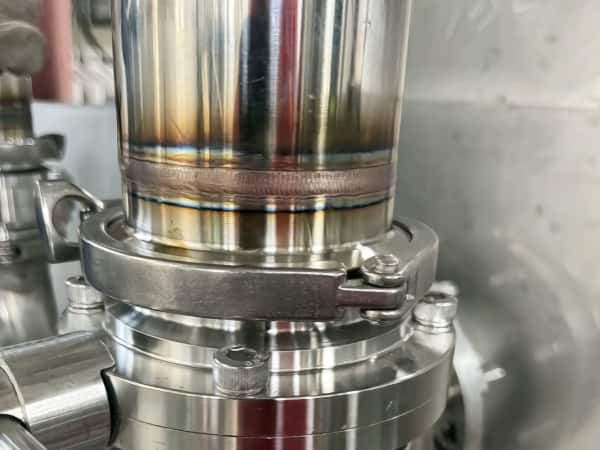
Welding Types
According to the physical characteristics of the welding process, it can be divided into three categories: Fusion Welding, Pressure Welding, and Brazing.
- Fusion Welding: The joint area of the materials to be welded is heated to a molten state, forming a weld pool that solidifies upon cooling.
- Pressure Welding: Pressure (with or without heating) is applied to cause plastic deformation of materials, achieving atomic bonding.
- Soldering: Filler metal with a melting point lower than the base metal is melted and fills the gap, forming a metallurgical bond.
| Classification | Welding Method | Description | Application |
| Fusion Welding | Arc Welding | Uses electric arc as a heat source ( MIG/MAG welding, TIG welding (argon arc), submerged arc welding). | Widely used in steel structures, automobiles, aerospace, etc. |
| Gas Welding | Heat is supplied by gas combustion, melting the joint and filler metal, which then solidifies to form a metallurgical bond. | ||
| High Energy Beam Welding | Laser welding, electron beam welding (very high energy density, suitable for precision/deep penetration welding). | ||
| Pressure Welding | Resistance Welding | Spot welding, seam welding, butt welding (combines heat from electric current and pressure). | Spot welding in car bodies, pipeline butt welding, aerospace turbine blade joining. |
| Friction Welding | Friction stir welding, inertia friction welding (heat generated through friction). | ||
| Ultrasonic Welding | Uses high-frequency vibration energy to bond materials (commonly used for plastics or thin/light metals). | ||
| Brazing | Brazing (Hard Soldering) | Filler metal melting point > 450°C (e.g., copper-based, silver-based fillers). | Electronic component welding, air conditioner piping, tool edge brazing. |
| Soldering (Soft Soldering) | Filler metal melting point < 450°C (e.g., tin-lead solder, commonly used in electronics). |
Common Welding Processes
Numerous welding processes exist, each suited to different materials, applications, and environments. The most common include:
Arc Welding (MIG, TIG, SAW)
High-Energy Beam Welding
- Resistance Welding
Each process has unique advantages in terms of cost, speed, and quality.
Arc Welding
Arc welding uses an electric arc to generate the heat needed to join metals. It is widely used in both manual and automated manufacturing systems.

MIG Welding
MIG welding is a semi-automatic or automatic process where a continuous wire electrode is fed through a welding gun, while a shielding gas (mig argon) protects the weld area from contamination.

TIG Welding
ARC Tig, or Gas Tungsten Arc Welding (GTAW), utilizes a non-consumable tungsten electrode to produce the weld. Filler metal is added manually, and an inert gas (tig argon) shields the weld.

Submerged Arc Welding
SAW involves a continuously fed consumable electrode and a blanket of granular flux. This flux covers the arc zone, preventing sparks and spatter while increasing weld quality and penetration.
| Comparison | MIG Welding | TIG Welding |
|---|---|---|
| Electrode Type | Consumable wire electrode (serves as filler material) | Non-consumable tungsten electrode (requires separate filler wire) |
| Shielding Gas | Inert gas or gas mixture (e.g., argon, CO₂) | Pure argon (inert gas) |
| Efficiency | High (fast welding speed) | Low (slower process) |
| Operational Difficulty | Relatively easy | Relatively complex |
| Weld Appearance | Rough surface texture | Smooth, aesthetic finish |
| Suitable Materials | Mild steel, stainless steel, aluminum alloys, etc. | Aluminum, titanium, copper, and precision components |
High-Energy Beam Welding
High-Energy Beam Welding (HEBW) is an advanced fusion welding process that uses a highly concentrated beam of energy to melt and join metals. The two most common types of HEBW are:
Electron Beam Welding (EBW)
Laser Beam Welding (LBW)
These processes are known for their precision, deep penetration, and ability to weld difficult materials with minimal distortion.
Electron Beam Welding
Electron Beam Welding is a fusion welding process that uses a high-velocity electron beam to generate heat by striking the metal, causing localized melting and joining of the workpieces. The process takes place in a high vacuum environment, offering high energy density, deep penetration, and superior weld quality. It is widely used in aerospace, nuclear, precision machinery, and other industries.
Concentrated energy achieves deep penetration.
Vacuum environment improves weld purity and quality.
Non-contact process with no electrode wear or slag.
Precise control suitable for micro-components and high-precision parts.
Fast and efficient, ideal for high-volume production.
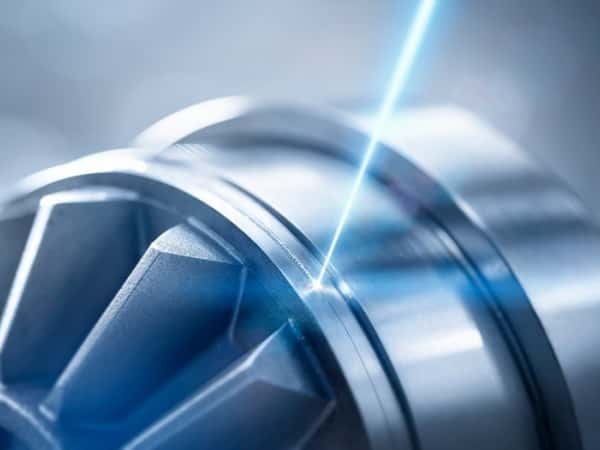
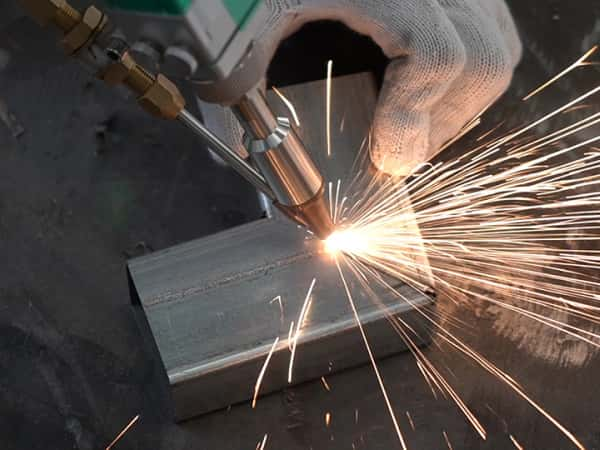
Laser Beam Welding
Laser beam welding is a high-precision fusion welding process that uses a high-energy laser beam focused on the metal surface to rapidly melt the material and form a weld. The core principle is converting light energy into heat energy to achieve deep penetration welding, resulting in high-strength and low-distortion joints.
Concentrated energy with deep penetration
Non-contact process with minimal contamination
Precise control and high welding consistency
Low heat input with almost no post-weld deformation
| Feature | Electron Beam Welding (EBW) | Laser Beam Welding (LBW) |
|---|---|---|
| Energy Source | Electron beam | Laser beam (optical) |
| Medium | Vacuum | Air or inert gas |
| Penetration Depth | Very deep (up to 300 mm) | Moderate to deep (up to 25 mm) |
| Heat Affected Zone (HAZ) | Narrow | Narrow |
| Welding Speed | High | Very high |
| Equipment Cost | High | High |
| Part Size Limitation | Limited by vacuum chamber | Less limited |
| Automation Suitability | Moderate | Excellent |
| Typical Applications | Aerospace, nuclear | Automotive, electronics, medical |
Resistance Welding
Resistance welding is a welding method that utilizes the resistance heat generated by electric current passing through the contact surfaces of workpieces and adjacent areas to heat the workpieces to a molten or plastic state, and then applies pressure to form a welded joint.
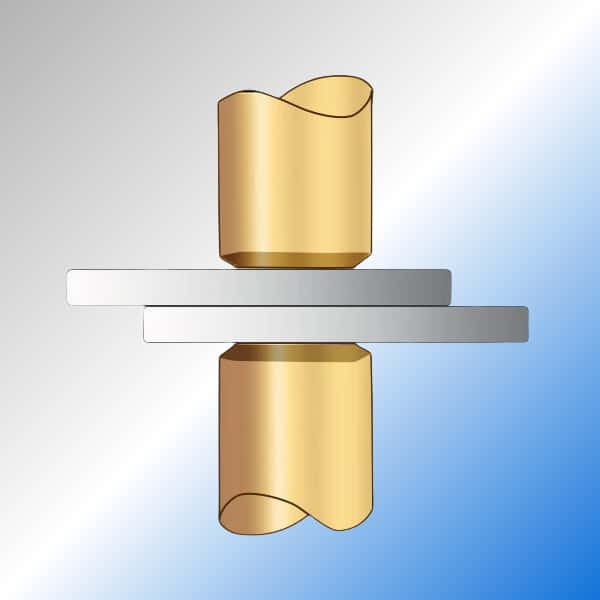
Spot Welding
Spot welding involves assembling workpieces into an overlapping joint, clamping them between two columnar electrodes, and using resistance heat to melt the base metal, forming a nugget weld.
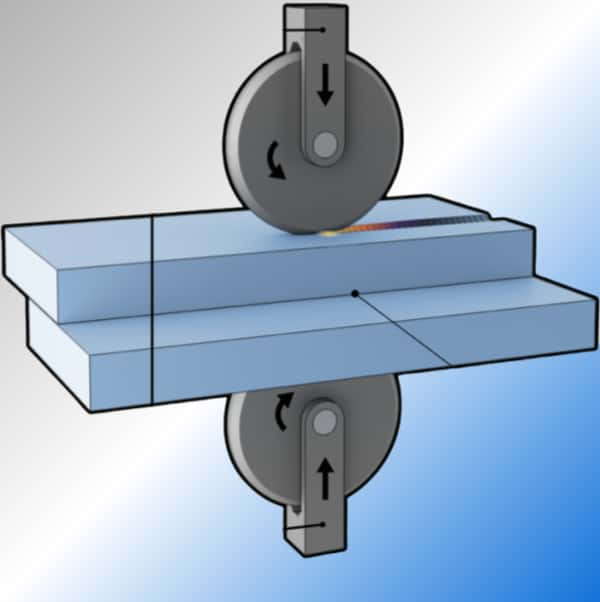
Seam Welding
Seam welding is similar to spot welding in that both use resistance heat to melt the base metal. The difference is that seam welding uses rolling electrodes. During the welding process, the electrodes roll while applying pressure and electricity, causing the workpiece to form a continuous weld.

Butt Welding
Butt welding involves placing the ends of two workpieces opposite each other, using resistance heat to heat the ends to a plastic state, and then quickly applying axial pressure to fuse the ends of the two workpieces together.
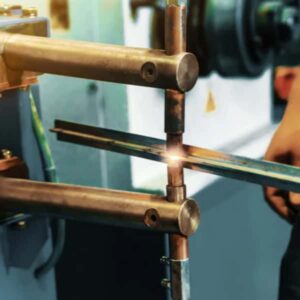
Spot Welding Process
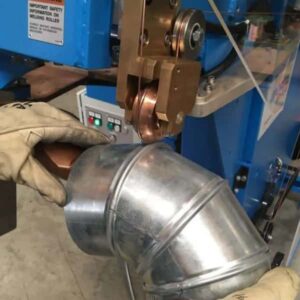
Seam Welding Process

Butt Welding Process
How to work of Welding Manufacturing?
The welding manufacturing process typically involves the following steps:
Design Phase
Joint design
Welding process selection
Welding sequence planning
Preparation Phase
Material inspection
Groove preparation
Surface cleaning
Assembly and tacking
Welding Setup
Preheating (if required)
Welding operation
Interpass temperature
control
Post-Processing
Post-weld heat treatment
Weld cleaning
Visual inspection
Inspection
Non-destructive testing
Mechanical property testing
Dimensional inspection
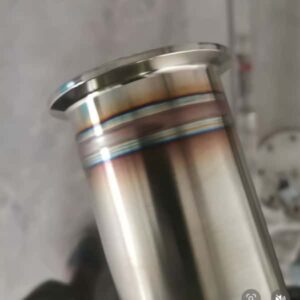
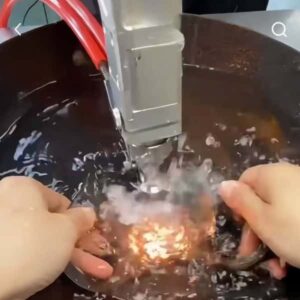
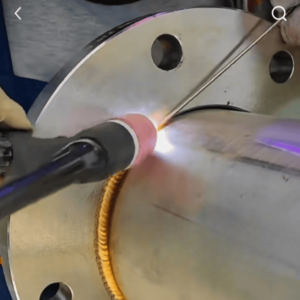
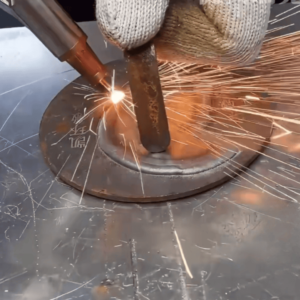
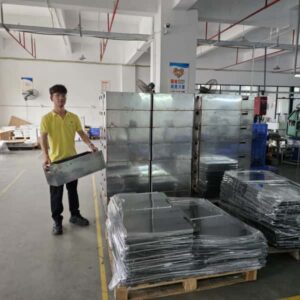
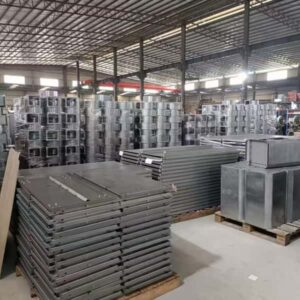
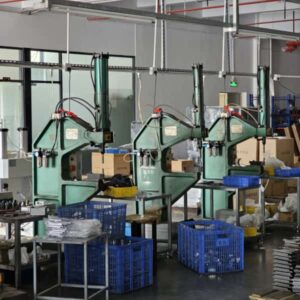
Common Welding Joint Configurations
Welded joints are the core component of connecting weldments. From a structural safety perspective, the strength, toughness, and integrity of the joint directly determine the load-bearing capacity of the welded structure. From a functional perspective, joints must meet specific performance requirements, such as the butt joints of pressure vessels, which must ensure sealing. From a stress-bearing perspective, the design of different joint types must match the structural stress pattern, properly distributing stress and reducing stress concentration, which directly impacts the fatigue life and durability of the structure. For example, butt joints reduce stress through full penetration welding, while fillet joints balance shear forces through fillet welds.

Butt Joint
A connection between the ends or edges of two parts making an angle to one another of 135-180° inclusive in the region of the joint.
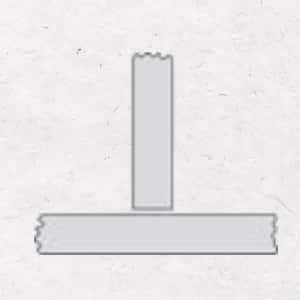
T Joint
A connection between one part's end/edge and another's face, with the parts angled >5° to ≤90° at the joint.
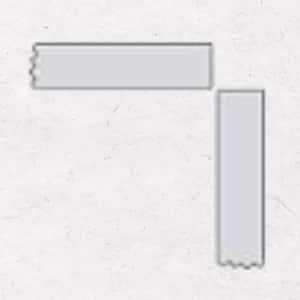
Corner Joint
A connection between the ends or edges of two parts making an angle to one another of angled 30°< angle<135° at the joint.
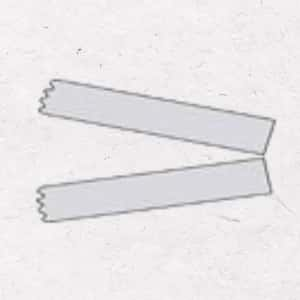
Edge Joint
A connection between the edges of two parts making an angle to one another of 0 to 30° inclusive in the region of the joint.

Cruciform Joint
A connection in which two flat plates or two bars are welded to another flat plate at right angles and on the same axis.
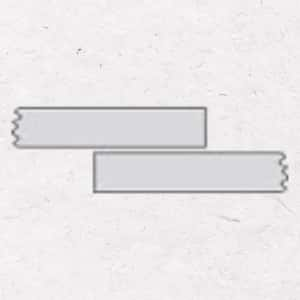
Lap Joint
A connection between two overlapping parts making an angle to one another of 0-5° inclusive in the region of the weld or welds.
Welding Materials and Structures
In welding design and production, the selection of materials and coordination with structural design play a decisive role in welding quality, efficiency, and the final product performance. Proper material matching and structural compatibility not only reduce welding defects but also enhance reliability and service life.
Welding Materials
Welding materials primarily include base metals, filler materials, and shielding materials (such as gases or fluxes). Different metals vary significantly in their weldability. The following are common metal materials and their welding suitability:
| Material Type | Weldability | Recommended Processes | Characteristics |
|---|---|---|---|
| Low Carbon Steel | Excellent | MIG, TIG, Arc Welding | Easy to weld, cost-effective, widely used |
| Stainless Steel | Good | TIG, MIG | Corrosion-resistant, heat-affected zone hardens easily |
| Aluminum & Alloys | Moderate to High | TIG, MIG | High thermal conductivity, oxidizes easily |
| Copper | Poor | TIG, Laser Welding | Extremely conductive, requires high heat input |
| Titanium & Alloys | Excellent | TIG | High strength, lightweight, sensitive to contamination |
| Nickel Alloys | Good | TIG, MIG | Heat and corrosion resistant, used in special applications |
Filler Materials (Wire/Electrode)
Filler wires should match the base metal for metallurgical compatibility;
Aluminum and copper require special alloy wires;
TIG welding typically uses non-consumable electrodes and separate filler rods.
Shielding Materials (Gas/Flux)
MIG/TIG: Use argon, helium, or mixed gases as shielding;
Submerged Arc Welding: Flux blankets the arc to prevent oxidation;
Brazing/Gas Welding: Use flux to remove oxides and improve wetting.
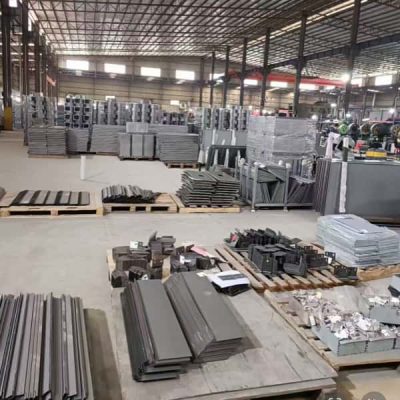
Coordination Between Welding Design and Process
High-quality welding relies not only on equipment but also on coordinated design. Designers and welding engineers should collaborate early in the design phase to ensure compatibility between structure and welding process. In deep-sea diving equipment, welding robotic arms are often used for sealing. Because the high pressure in the deep sea cannot leave any gaps, robotic arms have high precision, and sensors can capture details and control the trajectory, making the welds dense and seamless, ensuring the safety of deep-sea activities.

- Joint Type Selection: Prefer butt joints with strong mechanical performance
- Process Window Planning: Consider process feasibility and access
- Heat Input Management: Avoid cracking or undesired microstructure
- Fit-Up and Tolerances: Match weld size with realistic assembly tolerances
- Post-Weld Processing: Allow space for grinding, inspection, coating
Real-Life Application Examples
| Application Area | Materials Used | Joint Type | Welding Method | Notes |
|---|---|---|---|---|
| Pressure Vessels | Carbon/Stainless Steel | Cylinder + End Caps | TIG + SAW | Requires full penetration, leak-proof |
| Steel Frames | Mild Steel | T-joints, Fillet | MIG + Arc Welding | Durable and rigid structure |
| Automotive Chassis | High-Strength Steel, Aluminum | Lap Joints, Spot Welds | MIG, Resistance Welding | Thin sheet welding, high automation |
| Aerospace Components | Aluminum, Titanium | Butt Joints | TIG, Laser Welding | Precision welding with minimal distortion |
Production factory pictures
Below are some photos of our factory. We can provide you with quick quotes for not only welding but also CNC machining, Sheet Metal bending, and laser cutting. If you have a new design, please do not hesitate to contact us for a quote.
FAQ
Q1: What is the best type of arc welding for beginners?
A: Mig or tig welding, Mig welding is typically recommended for beginners because it’s easy to control, semi-automated, and requires less hand-eye coordination than TIG.
Q2: Which welding process is best for aluminum?
A: TIG welding is ideal for aluminum due to its precision and cleanliness, but MIG welding with the right wire and settings can also be effective.
Q3: What causes porosity in welding?
A: Contaminated base material, improper shielding gas flow, or moisture in the electrode can lead to porosity.
Q4: Can stainless steel be MIG welded?
A: Yes, using a shielding gas like argon/CO₂ mix and stainless steel wire.
Q5: What safety equipment is needed for arc welding?
A: Welding helmet, gloves, apron, safety glasses, and proper ventilation are essential.
Ready to discuss your new design?
Fill out the form below our team will feedback within 24 hours.
